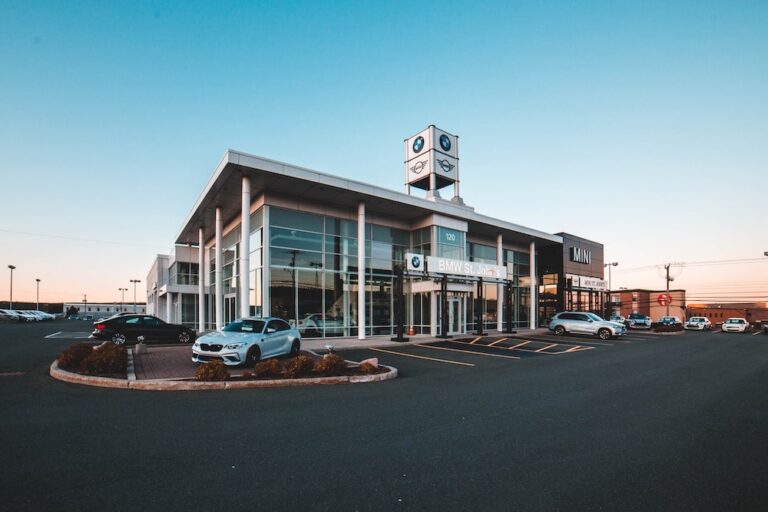Talk to Sales: (401) 200-6026
If you want to boost lead traffic and close more car deals, start by changing your auto dealer marketing. Here’s a 10-step process to get started!
 You just started as the new GM of a pre-owned dealership with three locations. The owners understand that car sales, at the end of the day, is a face-to-face business. They’ve hand-picked their sales teams and provide regular training sessions throughout the year. But there’s one problem: they’re not getting enough traffic to the dealership.
You just started as the new GM of a pre-owned dealership with three locations. The owners understand that car sales, at the end of the day, is a face-to-face business. They’ve hand-picked their sales teams and provide regular training sessions throughout the year. But there’s one problem: they’re not getting enough traffic to the dealership.
So what do you do? You’ve been in the car business long enough to know that buyers are online-based. Getting them into the dealership starts with smart marketing, focused targeting, and quality incentives. You’re in a time crunch, so it’s a good idea to follow a step-by-step process and focus on the areas that matter.
Step 1: Build your A-team to tackle this project
If you want to transform your auto dealer marketing and achieve real results, then you need to start from the bottom. Gather the right team of professionals to help tackle different tasks and brainstorm ideas.
Get your marketing managers, back-end developers, writers, and a few salespeople into a room. Pinpoint the problems in the marketing strategy and what needs to change. Host two or three meetings with your team to find solutions and assign tasks with a deadline in place.
Step 2: Research your local competitors to see what you can do differently
Turn your focus to the surrounding car dealers in your area. What are they doing, both online and offline, that you’re not? What’s working for them and how can you do it better? Take time to research their entire marketing scheme, and how it all works together (or how it’s not working):
- How current promotions are marketed at the dealership
- How the website is setup to convert visitors into leads
- What referral and loyalty programs are offered to customers
- What audience is their marketing material targeting
Once you’ve finished your research on local competitors, start looking up dealerships around the U.S. that are ideal examples of what you’d like to achieve.
Learn from the best to become the best.
Step 3: Analyze current marketing channels and allocate funds towards what is working
Work with your marketing department to figure out the ROI for each marketing dollar that goes out. What areas are giving you the most return? Think in terms of quality leads, referrals, and hard sales. If you have channels that are not working (or difficult to measure), consider redirected those dollars somewhere else.
Marketing success, just like every other aspect of business, depends on how intelligently you spend your money.
Step 4: Start with your website (the digital doorway to your dealership)
Car buyers are researching your dealership. If they find your inventory online, they will inevitably end up on your website. Make the user experience unique and capture their attention (and information) right away.
- Create several “trip” offers to capture your web visitor’s information and turn them into a lead.
- Make use of video content, such as tutorials, walk-throughs, vehicle presentations, and employee spotlights.
- Showcase high-quality photos of your inventory and provide in-depth information.
- Make it easy for every lead to get in touch with the dealership. Make your web forms short and simple.
Step 5: Become a resource for your customers with useful and educational content
What kind of content can you give customers and leads that will show your expertise and professionalism? Starting a blog is one of the best ways for two reasons:
- Blog content can be “search engine optimized” (SEO) to target specific audiences.
- Blog posts consistently provide new and fresh content to engage customers.
Brainstorm with your marketing team to write about topics your audiences will find useful. Get up-to-date with content marketing practices and target online searches with relevant blog posts. Promote your blog posts over social media channels to drive further clicks and traffic to your website (and sales funnel).
Step 6: Market to the demographics with the most revenue potential
Segment your customers and figure out your exact “bread and butter” demographics. Penetrate that local market with promotions that offer better incentives than your competitors.
Even if you’re offering lower prices than most dealerships, that’s okay—profit opportunities are all over the board. Penetrate the market first, then focus on building profit opportunities with each customer. Referrals, F&I, and service departments all come into play.
Step 7: Invest in a CRM that is made specifically for car dealers
Choose a CRM software that’s made for your business. There are many CRMs available today, but “one-size-fits-all” software doesn’t work for car dealerships. Your workflow is unique, so choose a tool that understands how to support that plan.
Here at AutoRaptor, we understand what dealership teams need to succeed:
- Customizable lead management and assignment
- Web-based software accessible by mobile phones 24/7
- Analytics and reporting tools for viewing progress
- Step-by-step workflow reminders to keep staff focused
- Email campaigns and templates for customer engagement
Step 8: Smooth out all the bumps in your lead pipeline and sales funnel
Your inbound sales funnel is the most important aspect to auto dealer marketing. All of your efforts should focus on different points of the “customer journey.” For example:
- Awareness stage: online and offline promotions, targeted content, advertising
- Searching for a car: third-party listings, website content, conversion funnels, incentives
- Locating your dealership: video content, special offers, email capture, drip campaigns, calls-to-action
- Follow-up process: lead management and assignment, follow-up, setting an appointment
These processes work together, and your auto dealer marketing should focus on engaging with prospects at every stage.
Step 9: Create referral and loyalty programs your customers will share with others
Remember: the sales cycle doesn’t end when the customer drives off the lot. Your biggest lead generation opportunities lie with happy customers willing to spread the word about your dealership. Repeat business and customer loyalty is also an important factor to longevity.
Research what referral programs stand out amongst car dealers. Take advantage of great customer experiences and opportunities to obtain strong leads.
Step 10: Measure and refine your strategies for better results
Finally, the last step is a continuous experiment. You have to test your marketing strategies and figure out what works best. Marketing is constantly in flux, so you need to keep a watch on your results and adapt over time.
Create a schedule to review your current efforts on a monthly basis. Crunch the numbers to see your ROI and make changes are you go along. Also, if something is working well, don’t fix it of it’s not broken.
Be flexible with trends—auto dealer marketing best practices change all the time
Marketing strategies change with customer behaviors. That’s what drives the marketing world. Read up on the latest trends in the consumer world and try to stay ahead of the curve as best you can. It will pay off in the long run. You’ll be offering services and experiences to customers while everyone else is trying to catch up.
Interested in an Affordable, Full-Featured Auto Dealer CRM?
Schedule an AutoRaptor Demo Now!





